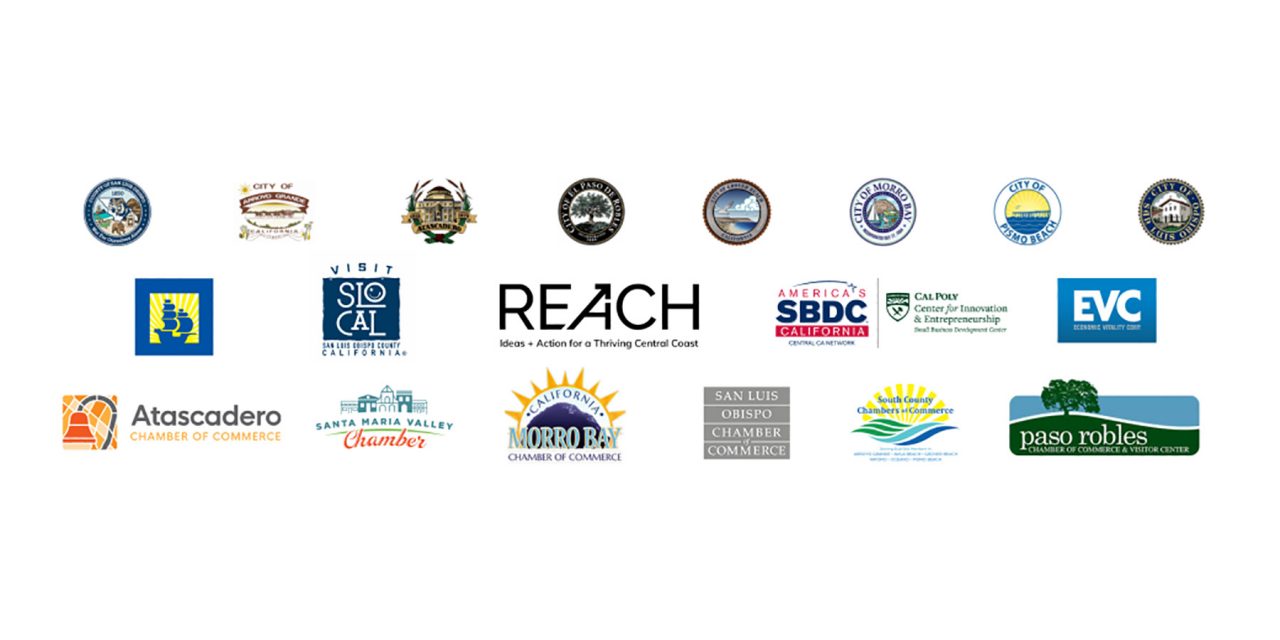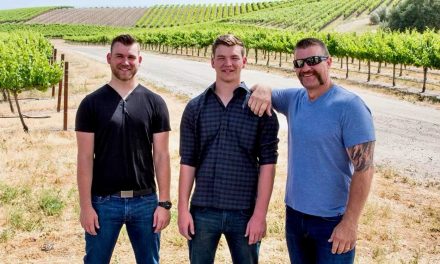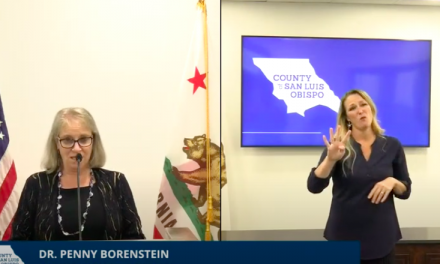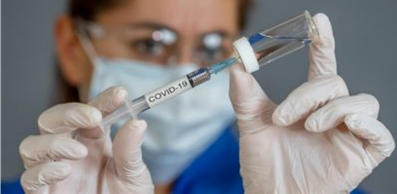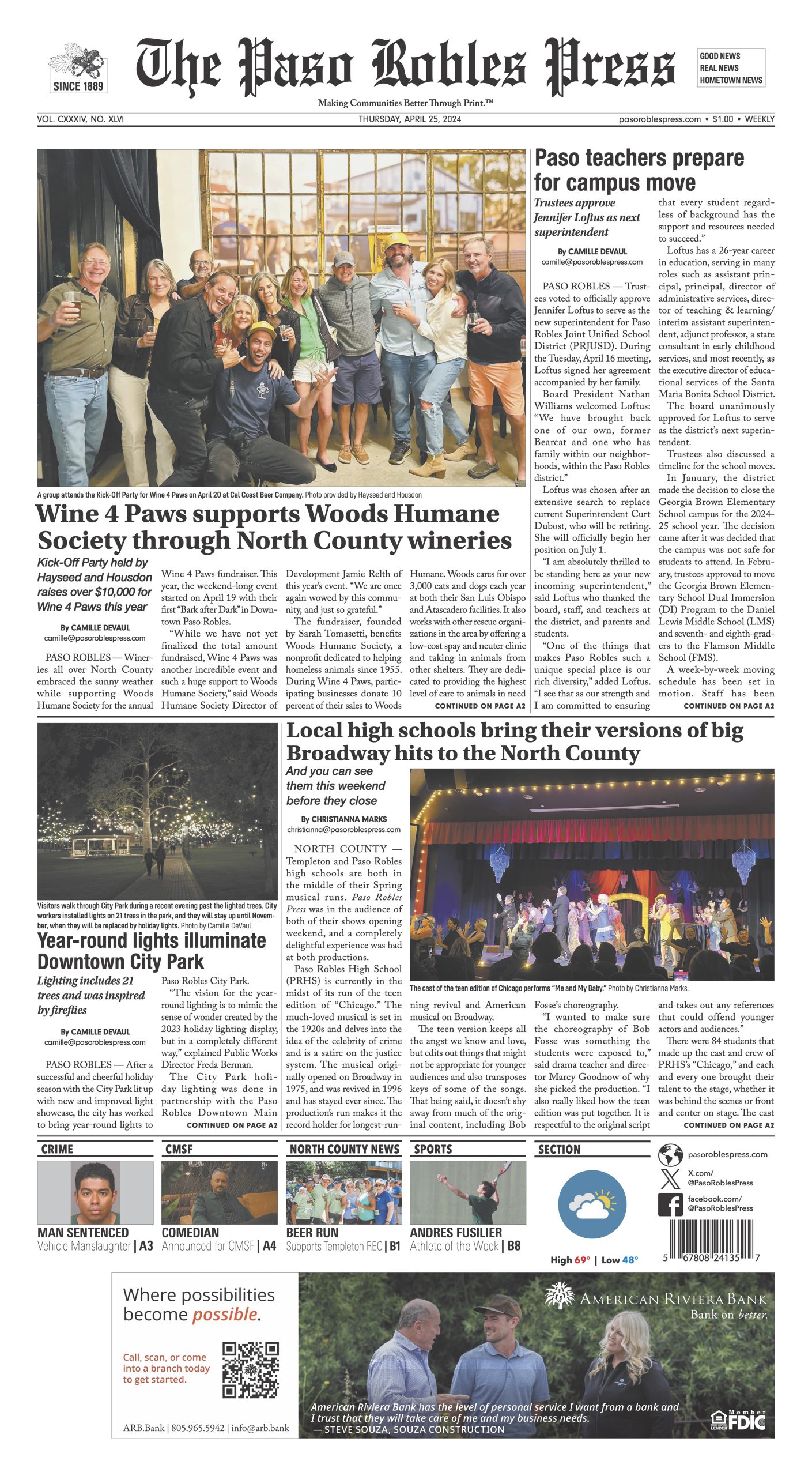REACH takes lead role in coordinating economic recovery
At noon on Wednesday, San Luis Obispo County updated COVID-19 numbers to reveal a small increase in numbers. The overall number of confirmed cases in SLO County rose by three in a continuing flattening trend.
Within a total of 102 confirmed cases, 73 are deemed fully recovered, 25 are recovering at home, three are hospitalized in the ICU, and one case of death by coronavirus-related complications.
Paso Robles continued to hold the largest number of confirmed cases, with 29, followed by Atascadero with 20. Both saw an increase in numbers day-over-day.
Later on Wednesday, the County reported in further depth at the regularly scheduled COVID-19 briefing.
Reaching out
San Luis Obispo County Administrative Officer Wade Horton focused on the economic struggles facing the community, and announced the creation of a public-private partnership that promises to bring economic relief and recovery.
“We recognize severe economic hardships across communities and households here on the Central Coast,” Horton said. “The County has formalized a public-private partnership with REACH to implement immediate economic relief and future recovery actions.”
The new public-private coalition developed a new domain name, called recovercentralcoast.org. The domain currently forwards to https://www.recoverslo.org/en/covid19.aspx — a centralized home of links to local government agencies, business resources, and disaster relief funding. REACH, formerly known as The Hourglass Project, was created to empower and defend the local working and middle classes by .
REACH released a survey on Jan. 26, 2020 that reported financial insecurity was common among the middle and working class on the Central Coast, stating “It’s not surprising that Central Coast residents are losing hope when so many are struggling to get by, lacking even the most basic needs.”
Struggling to get by with even the most basic needs was already a problem before coronavirus hit California on March 13. REACH committed to answer those needs with a collective force.
“With the sweeping impacts of COVID-19, we are focusing our attention on uniting the region with one voice and one coordinated response that will allow business, government, healthcare, and nonprofit sectors in our region to work collectively to meet emerging needs across our community,” REACH CEO Melissa James said.
James continued with promises of bringing coordinated efforts and provision of resources and job opportunities to the region through the work of the coalition.
Testing, testing
County Health Officer Penny Borenstein followed James at the podium, addressing the community health status and answered questions about local concerns. Echoing her comments from Monday’s briefing, Borenstein again encouraged more testing in SLO County.
“Please, if you have symptoms, get a test,” Borenstein said, “so we can understand what is going on in our community with this disease.”
Borenstein admitted the County capacity is not able to test every possible local case but she understood that private laboratories had the capacity needed, and the County office could assist.
“We cannot open our testing to the entire general population,” Borenstein said. “If you are unable to get a test, please call the Public Health Department and we will work to assist you to find a place to get that test.”
When asked when SLO County’s COVID-19 situation could peak, Borenstein admitted she did not know and that the data, models, and projections were unreliable.
“We in SLO County are not in the same place as every other part of California,” Borenstein said. “The Governor said in their statewide modeling they are looking at a peak of late May. We are probably there sooner than later.”
With three more COVID-19 cases reported today, number continue to rise at a slow pace and California is showing a slower-than-expected rate of coronavirus spread as a state. The smaller population and rural lifestyle San Luis Obispo County enjoys in a normal year may lend itself to a reduced rate of spread, but the County continues to prepare for the worst. Local hospital capacity is ready and available to manage a surge in cases.
“We are prepared for that surge,” Borenstein said. “Our hospitals are ready and we have the capacity to treat people outside the hospital at our alternate care site.”
The capacity to care for sick registers some relief as days turned into weeks of shelter-at-home observation, but the flattening of the curve means the weeks could turn into months of physical distancing orders.
“The more our mitigation measures and social distancing take hold, the further out we can potentially push when we see our peak,” Borenstein said. “Or maybe we don’t peak. Maybe we are just sort of ticking along. Our entire team is looking at these numbers every day.”
Borenstein said there is no affirmative outlook on a shift, but the numbers of new cases are reflective of action taken by SLO County residents.
“We are seeing a flattening of our curve,” Borenstein said. “It is absolutely good news and it is kudos to our entire community for doing everything we have asked of them.”
Curves and boundaries
The state and counties continue to observe and receive data models to project the curves, plan for surges, and organize resources. While national and state models have been shared with the public, officials have not released information specific to SLO County.
“We want to be very transparent with this,” Borenstein said. “We have been reluctant to publish our models. It is not because we are withholding information from the public, it is just that the models are subject to change, somewhat unreliable, and we don’t want people to hang their hat on something specific we share one day that is subject to change.”
Her comments reflect a large scale shifting of expectations as models adjust to efforts to flatten the curve produce results. Projections continue to whip across the national spectrum wildly, with California’s slow-down of the infection raising eyebrows and reports suggest a possible herd immunity has been quietly at play.
“We’ve all along said to our public that we want you to get out of the house,” Borenstein said. “We want you to get fresh air. We want you to get exercise. We want you to, while doing that, comply with the intent of physical distancing. Keep your distance. Make sure you are not gathering in groups, not touching each other.”
The County is placing some restrictions on public places, shutting down parks when physical distancing is not observed and limiting vehicle access to Santa Margarita Lake and Lopez Lake to half the normal capacity over the weekend.
On Monday, Borenstein released a SLO County statement following the Center for Disease Control recommendation to wear facial covering when venturing into public places where physical distancing might be difficult.
California Assemblyman Jordan Cunningham sent a note encouraging others to follow his example in observing facial covering recommendations.
“I plan on wearing one when out in potentially crowded places where it is difficult to maintain social distancing, like at the grocery store. Don’t forget to do your part to help stop the spread of COVID-19,” Cunningham wrote in an email.

